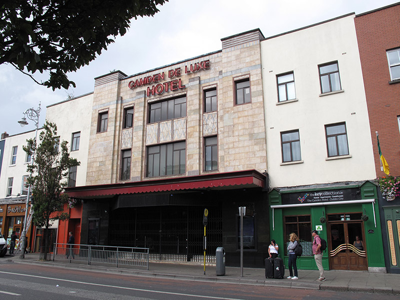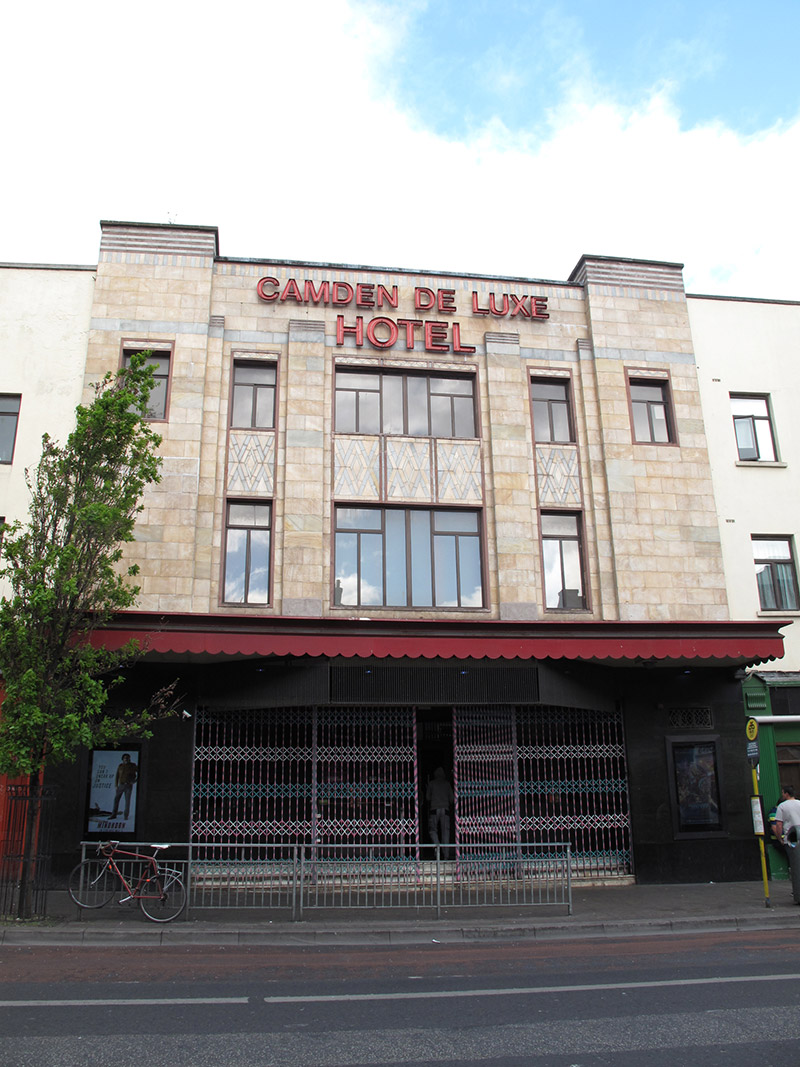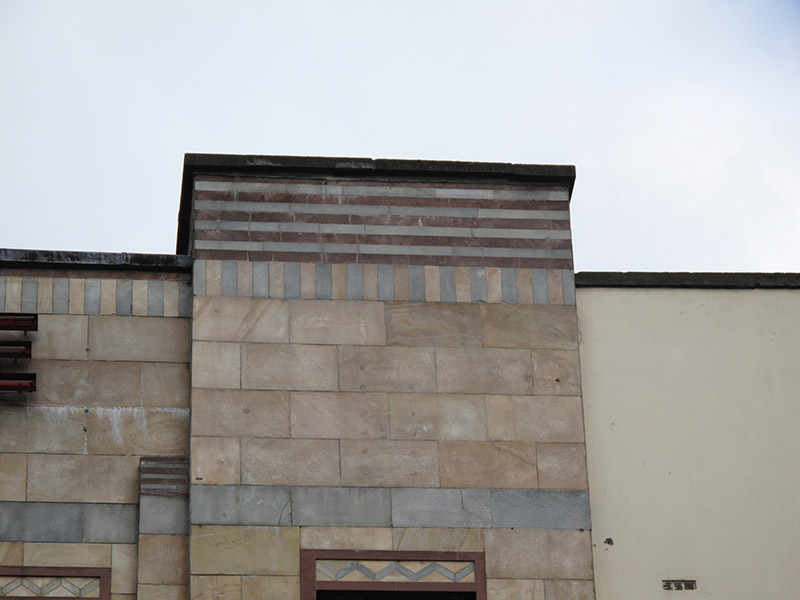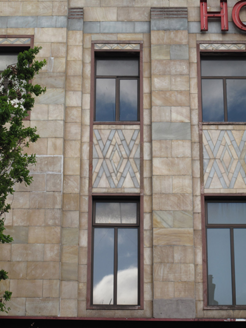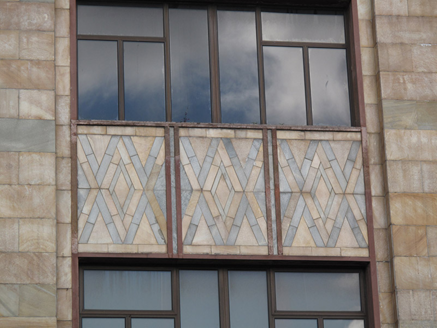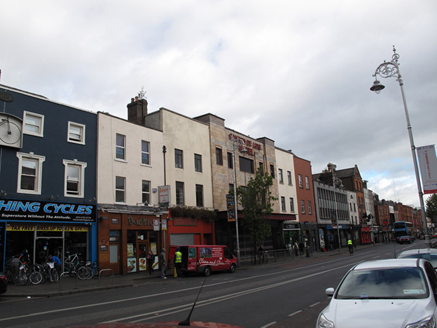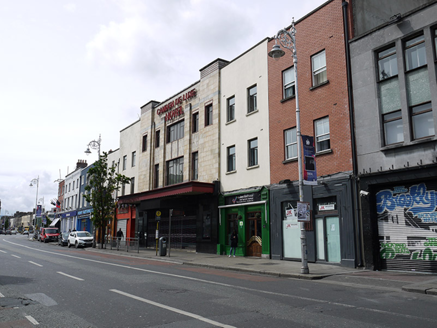Survey Data
Reg No
50110300
Rating
Regional
Categories of Special Interest
Architectural, Artistic, Historical, Social
Previous Name
Theatre DeLuxe
Original Use
Cinema
In Use As
Hotel
Date
1910 - 1915
Coordinates
315586, 233126
Date Recorded
21/05/2017
Date Updated
--/--/--
Description
Attached five-bay three-storey former cinema, built 1912, extended 1920 and remodelled 1933. Incorporating two-bay blocks to north and south elevations. Now in use as hotel and night club. Recent additional storey to roof, hidden behind parapet with lead flashing. Paired raised bays flanking façade, having polychrome tiled platbands. Horizontal polychrome tiled platband to parapet. Polychrome tiled wall. Pilasters flanking centre bays. Applied raised lettering reading 'Camden De Luxe Hotel'. Timber canopy with scalloped skirting over polished granite walls to ground floor. Square-headed window openings with tiled surrounds and replacement windows, those to centre bays arranged in vertical strips having polychrome geometric aprons. Square-headed entrance to front, nosed polished granite steps, recent steel shuttering.
Appraisal
Casey (2005) notes that the Camden Deluxe Hotel (Nos. 85-86) began life as a cinema, built at No. 85 in 1912 to designs by Frederick Hayes. In 1920 it was extended to include No. 86, and some of the fibrous plaster ceilings from this period apparently survive in the ground floor bar and first-floor night club. In 1933 it was remodelled in the Art Deco style by Jones & Kelly, and the façade was clad in a polychrome tile veneer, with two pylon-like ends flanking a three-bay centrepiece with pilasters and horizontal windows with deep aprons. The marble wall panelling and stairs were executed by C.W. Harrison & Sons, Pearse Street, and along with the symmetry of the façade, creates a striking and aesthetically pleasing focal point on the streetscape. The canopy, large entrance and lit lettering to the parapet are characteristic features of early twentieth-century entertainment venues. The first cinema in Ireland, the Volta, was opened in 1909, so this building represents an early example of an important social and cultural development in the country.

